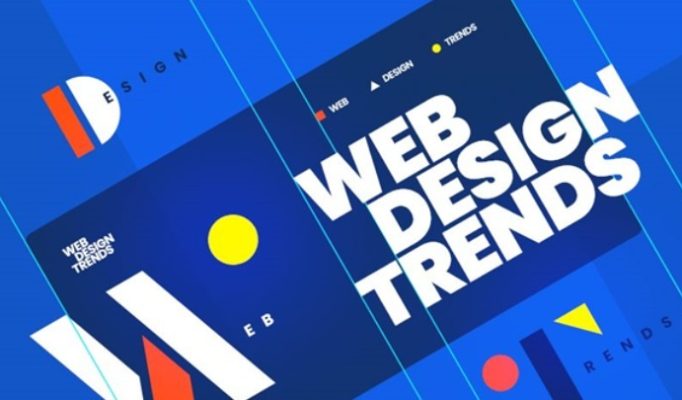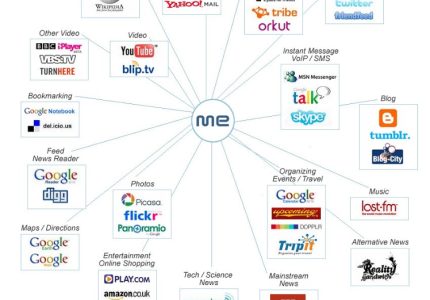Overview of Free Website Design Programs
Free website design programs offer accessible tools for individuals and small businesses to create professional-looking websites without the need for coding knowledge or expensive software. These programs typically feature user-friendly interfaces, customizable templates, and drag-and-drop functionality to simplify the website building process. With a variety of options available, users can efficiently develop and launch websites that meet their specific needs, making online presence more attainable for everyone.
Definition and Purpose
Free website design programs are software tools that enable users to create and customize websites without the need for extensive coding knowledge or financial investment. These programs typically offer user-friendly interfaces, drag-and-drop functionality, and pre-designed templates to simplify the web development process.
The primary purpose of free website design programs is to make website creation accessible to a wide range of users, from beginners to small business owners, students, and hobbyists. By providing free access to essential features, these tools empower individuals to build professional-looking websites quickly and efficiently, fostering digital presence and online engagement without incurring costs.
Benefits of Using Free Programs
Free website design programs offer an accessible and cost-effective way for individuals and small businesses to create and maintain their online presence. These programs typically come with user-friendly interfaces, drag-and-drop features, and a variety of customizable templates, making website creation straightforward even for those without coding experience.
One of the main benefits of using free website design programs is the affordability, allowing users to build professional-looking websites without financial investment. They often include essential tools such as responsive design, SEO optimization, and hosting options, which help websites perform well across devices and attract visitors.
Additionally, free programs promote flexibility and creativity, enabling users to experiment with different layouts, color schemes, and features without risk. They also generally come with community support and tutorials, aiding users in troubleshooting and enhancing their website development skills.
Overall, free website design programs are valuable resources for beginners, hobbyists, and small organizations aiming to establish an online presence efficiently and effectively without incurring costs.
Popular Free Website Design Tools
Creating a professional and attractive website doesn’t have to be costly or complicated thanks to a variety of free website design tools. These programs offer intuitive interfaces, pre-designed templates, and essential features that enable both beginners and experienced designers to build impressive websites with ease. Exploring popular options can help you find the perfect solution to bring your online vision to life without financial investment.
Wix
Wix is a popular free website design tool that offers an intuitive drag-and-drop interface, making it easy for users to create professional-looking websites without any coding experience. It provides a wide range of customizable templates suitable for various types of websites, including business, portfolio, and personal projects. Wix also includes numerous free features such as image galleries, contact forms, and social media integration, allowing users to enhance their site’s functionality effortlessly. With its user-friendly platform and extensive design options, Wix is an ideal choice for beginners and small business owners seeking a free website design program.
Weebly
Weebly is a popular free website design tool that offers users an easy-to-use platform for creating professional-looking websites without any coding experience. It features a drag-and-drop editor, customizable templates, and useful built-in tools for building and managing websites. Perfect for beginners and small business owners, Weebly provides a free plan with essential features, making it accessible for users wanting to establish an online presence without upfront costs. Its user-friendly interface and extensive design options make it a top choice among free website design programs available today.
WordPress.com
WordPress.com is one of the most popular free website design tools available, offering users a straightforward platform to create and customize websites without any coding experience. It provides a wide range of pre-designed themes and templates that are easily adjustable to suit individual needs. The platform also includes drag-and-drop editors, making design simple and accessible for beginners. Additionally, WordPress.com offers free hosting, security features, and various plugins to enhance functionality, making it an ideal choice for personal blogs, small businesses, and portfolios looking for a professional online presence at no cost.
ZooI
ZooI is a popular free website design tool that offers an intuitive platform for creating professional-looking websites without requiring coding skills. It provides a variety of customizable templates and drag-and-drop features, allowing users to easily build and personalize their websites. ZooI is ideal for beginners and small business owners seeking a cost-effective solution to establish an online presence quickly and efficiently. Its user-friendly interface and extensive design options make it a preferred choice among free website design programs.
Google Sites
Google Sites is a popular free website design tool that allows users to create and publish functional websites quickly and easily. It offers a user-friendly interface with drag-and-drop features, making it accessible for beginners without requiring any coding knowledge. Google Sites integrates seamlessly with other Google services like Google Drive, Google Docs, and Google Calendar, enabling efficient collaboration and content management.
- Intuitive drag-and-drop editor
- Pre-designed templates for various website types
- Integration with Google Workspace apps
- Responsive design templates for mobile compatibility
- No hosting fees or additional costs
- Easy sharing and permission control
- Quick publishing options with custom URLs
Features of Free Website Design Programs
Free website design programs offer a variety of features that make creating and customizing websites accessible to users of all skill levels. These tools typically include drag-and-drop editors, pre-designed templates, and customizable elements to simplify the design process. Additionally, they often provide hosting options, responsive design capabilities, and integrated SEO tools, enabling users to build functional and visually appealing websites without the need for coding knowledge.
Drag-and-Drop Editors
Free website design programs with drag-and-drop editors are popular tools that enable users to create websites easily without the need for coding skills. These platforms offer intuitive interfaces where elements like text, images, and videos can be simply dragged into place, allowing for quick and customizable website development. They typically come with pre-designed templates and themes, helping users to start their projects effortlessly and ensuring a professional look. Additionally, many of these programs provide responsive design features, which ensure websites look good on various devices such as desktops, tablets, and smartphones. They often include built-in hosting options or easy integration with hosting services, simplifying the process from design to publishing. Moreover, free options usually support basic functionalities with optional upgrades for more advanced features, offering flexibility to users of all skill levels and project sizes. Overall, drag-and-drop editors in free website design programs democratize website creation by making it accessible, affordable, and straightforward for everyone.
Template Libraries
Free website design programs offer a variety of features that simplify the process of creating a website without the need for extensive coding knowledge. These platforms typically include user-friendly drag-and-drop editors, customizable templates, and intuitive interfaces which make website building accessible to beginners. Many free programs also provide built-in tools for adding multimedia, contact forms, and social media integration, enhancing the overall functionality of the site.
Template libraries are a key feature of free website design programs, offering a vast selection of pre-designed layouts tailored for different industries and purposes. These libraries enable users to quickly choose a professional-looking template that fits their needs, then customize it with their own content and branding. This not only speeds up the design process but also ensures a consistent and attractive appearance across various types of websites, whether for personal portfolios, small businesses, or blogs.
Custom Domain Options
Free website design programs offer a variety of features that make creating a website accessible and straightforward for beginners and experienced users alike. These programs typically include customizable templates, drag-and-drop editors, and built-in design tools that simplify the process of building a professional-looking site without coding knowledge. They often provide options for adding multimedia content, optimizing for mobile devices, and integrating social media or third-party services. Additionally, many free design programs come with limited storage and bandwidth to support small or personal websites.
Regarding custom domain options, free website design programs may have varying offerings. Some provide a free subdomain, such as yoursite.example.com, while others allow users to connect their own custom domain names. Connecting a custom domain usually requires upgrading to a paid plan, but it enables branding consistency, improved credibility, and easier access for visitors. The ability to use a custom domain is a significant feature for those seeking a more professional online presence, though it often involves additional costs outside the free tier.
Responsive Designs
Free website design programs offer a variety of features to help users create attractive and functional websites without cost. These tools often include drag-and-drop interfaces, customizable templates, and intuitive editors that simplify the design process for beginners and experienced users alike. Additionally, they typically provide access to a range of multimedia integrations, such as images, videos, and icons, to enhance website appearance and engagement. Many free programs also support basic SEO tools and web hosting options, making it easier to publish and promote the site.
Responsive designs are a key feature of modern free website design programs. They ensure that websites automatically adjust their layout and content to fit different screen sizes and devices, such as desktops, tablets, and smartphones. This flexibility improves user experience and accessibility, which can boost engagement and search engine rankings. Most free design tools include built-in responsive templates or offer easy editing options to create mobile-friendly websites without requiring advanced coding knowledge.
SEO and Analytics Tools
Free website design programs offer a variety of features that enable users to create attractive and functional websites without a financial investment. These tools typically include customizable templates, drag-and-drop editors, and intuitive interfaces, making website development accessible to beginners and professionals alike. Additionally, they often support essential SEO features such as meta tag editing, mobile responsiveness, and optimized loading speeds, helping websites rank better in search engine results. Many free programs also integrate analytics tools that provide insights into visitor behavior, traffic sources, and conversion rates, allowing users to monitor and improve their website performance effectively. Overall, these programs combine user-friendly design capabilities with essential SEO and analytics functionalities to empower users in building successful online presence at no cost.
Limitations of Free Website Design Tools
Free website design tools offer an accessible solution for creating online presence without upfront costs, making them popular among beginners and small businesses. However, these platforms often come with limitations that can impact the overall quality, customization, and functionality of the website. Understanding these restrictions is essential for users to determine if a free tool meets their long-term needs or if upgrading to paid options is necessary.
Limited Storage and Bandwidth
Free website design tools often come with limitations such as restricted storage and bandwidth, which can impact the functionality and scalability of your website. Limited storage space may prevent you from uploading large files, images, or extensive content, restricting your website’s growth and appearance. Similarly, limited bandwidth can lead to slower loading times or restrictions on the number of visitors accessing your site at once, negatively affecting user experience and search engine rankings. These constraints are typically in place to encourage users to upgrade to paid plans with more resources, making free tools suitable mainly for small projects or testing purposes rather than long-term, professional websites.
Subdomain Usage
Free website design tools offer an accessible way for individuals to create their own websites without financial investment, making them ideal for beginners and small projects. However, these tools come with certain limitations that can affect the overall quality and professionalism of the final website. Many free programs have restricted customization options, limited templates, and less control over the website’s code, which can hinder advanced design or functionality. Additionally, free tools often display platform branding or ads on the website, which may detract from a polished appearance. Hosting options are typically restricted, with websites often being hosted on subdomains provided by the platform, rather than custom domains. This can impact branding, SEO, and credibility, as subdomains are associated with the website builder’s platform rather than the individual brand. Overall, while free website design tools are a good starting point, they may not meet the needs of users seeking a more unique, professional, and scalable online presence.
Restricted Customization
Free website design tools offer an accessible way for individuals to create websites without financial investment, making them ideal for beginners or small projects. However, these tools come with significant limitations, particularly when it comes to customization. Users are often restricted to predefined templates and drag-and-drop elements, which limits the ability to create a unique and personalized website. Advanced design features and custom coding options are usually unavailable or very limited, preventing users from implementing specific functionalities or aesthetic changes tailored to their needs. Additionally, free tools frequently impose branding constraints, such as displaying the platform’s logo on the website, which can detract from a professional appearance. Overall, while free website design programs are convenient, their restricted customization capabilities can hinder the development of a fully unique and tailored online presence.
Presence of Ads
Free website design programs are a popular choice for individuals and small businesses looking to create a website without incurring costs. However, these tools come with certain limitations that users should be aware of before reliance on them for professional projects.
- Presence of Ads: Many free website design tools include advertisements on the websites created, which can detract from the professional appearance and user experience.
- Limited Customization: Free platforms often restrict the level of customization available, making it difficult to create a unique and tailored website.
- Limited Storage and Bandwidth: Users may encounter restrictions on storage space and bandwidth, which can hinder website growth and performance.
- Branding and Subdomains: Free plans typically include platform branding and require use of subdomains, reducing the professionalism of the website.
- Limited Features and Templates: Access to advanced features, premium templates, and integrations is often limited or requires paid upgrades.
- Control and Ownership: Users may have less control over their website files and hosting, sometimes relying on the platform’s infrastructure.
- Difficulty in Scaling: Free tools may not support large or complex websites, limiting future expansion options.
Choosing the Right Free Website Design Program

Choosing the right free website design program is essential for creating an appealing and functional website without breaking the bank. With numerous options available, it can be challenging to find the perfect fit for your project needs and skill level. Understanding the features, ease of use, and customization options of each platform will help you make an informed decision and bring your online vision to life effortlessly.
Assessing User Skill Level
When selecting a free website design program, it is essential to assess your current skill level to ensure a smooth and effective building process. Beginners should look for user-friendly platforms that offer drag-and-drop features and customizable templates, making it easier to create a professional-looking website without coding knowledge. More experienced users might prefer programs that provide advanced tools, greater flexibility, and the ability to customize code for a unique design. Evaluating your familiarity with website development can help you choose a program that matches your capabilities, saving time and reducing frustration. Additionally, consider whether the program offers helpful tutorials, community support, and scalability options to grow alongside your skills and needs. Ultimately, selecting the right free website design program depends on accurately understanding your user skill level and choosing a platform that aligns with your goals and proficiency.
Determining Website Goals
Choosing the right free website design program is essential to creating an effective and visually appealing website. When evaluating options, consider factors such as ease of use, available templates, customization features, and whether the program supports your specific project needs. Many free tools offer drag-and-drop interfaces, making it accessible for beginners, while others provide more advanced options for experienced users.
Determining your website goals is a crucial step before selecting a design program. Clearly define what you want to achieve with your website—whether it’s showcasing a portfolio, selling products, sharing blog content, or providing information. Understanding your objectives will guide your choice of features and design layout. For example, an e-commerce site requires integrated shopping cart functions, while a personal blog may prioritize content organization and readability. Establishing your goals early ensures your website design program aligns with your long-term vision and helps create a focused, user-friendly site.
Evaluating Available Features
When selecting a free website design program, it’s important to evaluate the features offered to ensure they meet your needs. Consider tools that provide a user-friendly interface with drag-and-drop functionality, which simplifies the design process for beginners. Look for customizable templates that align with your website’s purpose and aesthetic preferences.
Additional features to consider include mobile responsiveness, so your website appears well on all devices, and SEO tools to improve your site’s visibility in search engine results. Many free programs offer integrations with social media platforms, contact forms, and analytics to help monitor your site’s performance. Comparing these features across various options will help you choose a program that offers both ease of use and the necessary functionalities for your website project.
Considering Future Scalability
When selecting a free website design program, it is essential to consider not only current features but also how well the platform can support your website’s growth over time. A scalable program offers flexibility to add new pages, integrate advanced functionalities, and accommodate increasing traffic without significant redevelopment. Look for options that provide customizable templates, responsive design capabilities, and compatibility with third-party tools. Prioritize programs that have active community support and continuous updates, ensuring your website remains current and capable of evolving with your needs. Making an informed choice now will save time and resources as your online presence expands in the future.
Steps to Create a Website Using Free Tools
Creating a website using free tools is an accessible and cost-effective way to establish an online presence. With a variety of user-friendly platforms and design programs available at no cost, even beginners can develop professional-looking websites without coding experience. This guide will walk you through the essential steps to build your website using free design programs, making the process straightforward and achievable for everyone.
Sign-Up and Account Creation
Creating a website using free tools is an accessible way to establish an online presence without any cost. The process involves several straightforward steps, starting from selecting a free website design program to setting up your account. Here’s a guide to help you get started.
- Choose a Free Website Design Program: Select a user-friendly platform like Wix, Weebly, or WordPress.com that offers free plans suitable for beginners.
- Sign Up for an Account: Visit the chosen platform’s website and look for the sign-up or registration button. Click on it to begin creating your account.
- Fill in Registration Details: Provide necessary information such as email address, username, and password. Some platforms may also require additional details like your name or website purpose.
- Verify Your Account: Complete any email verification process if prompted, to confirm your registration and activate your account.
- Select a Template or Design: Once logged in, choose from a variety of free templates that suit your website’s theme or purpose.
- Customize Your Website: Use the platform’s drag-and-drop tools to add text, images, videos, and other content to personalize your site.
- Publish Your Website: After finalizing the design and content, click the publish button to make your website live on the internet.
Selecting Templates
Creating a website using free tools is a straightforward process that allows anyone to establish an online presence without cost. The first step is to choose a reliable free website design program, such as Wix, Weebly, or WordPress.com, which offer user-friendly interfaces and a variety of features.
Next, sign up for an account on the chosen platform and log in to access the website builder dashboard. Once inside, you’ll typically find an option to select a template or theme. Browse through the available templates to find one that suits your website’s purpose and aesthetic preferences.
After selecting a template, you can customize it by changing images, text, colors, and layout elements. Most free website builders provide drag-and-drop editors, making it easy to modify your website without any coding knowledge. Be sure to add essential pages such as Home, About, Services, and Contact, depending on your needs.
Next, review your website to ensure all content is correct and the design looks professional. Preview your site in different devices and screen sizes to ensure responsiveness. Once satisfied, publish your website using the platform’s free subdomain or connect a custom domain if available in your plan.
Finally, promote your website through social media, SEO best practices, and regular updates to attract visitors and grow your online presence. Using these free tools and templates streamlines the website creation process, making it accessible and efficient for beginners and experienced users alike.
Customizing Layout and Content
Creating a website using free tools involves several straightforward steps, from selecting a design program to customizing your content and layout to match your vision.
- Choose a Free Website Design Program: Research and select a reliable free website builder such as Wix, Weebly, or WordPress, which offer user-friendly interfaces and essential features without cost.
- Sign Up and Set Up Your Account: Register with your chosen platform to access its tools and start a new project or website.
- Select a Template or Theme: Browse through available free templates that suit your website’s purpose and style, then select one to serve as the foundation.
- Customize the Layout: Use the design tools provided to modify the structure of your pages by adding or removing sections, changing positions, and adjusting elements to fit your content and aesthetic preferences.
- Add and Edit Content: Insert text, images, videos, and other media into your pages. Customize fonts, colors, and styles to align with your branding or personal style.
- Preview and Test Your Website: Use the preview function to see how your site looks on different devices and browsers, making necessary adjustments for optimal display and functionality.
- Publish Your Website: Once satisfied with your design and content, publish your website through the platform’s publishing options, and make it accessible online.
By following these steps, you can create a professional-looking website using free tools, with a layout and content customized to your preferences and needs.
Adding Media and Functional Elements
Creating a website using free tools involves several essential steps to ensure a functional and visually appealing result. Begin by choosing a free website design program, such as Wix, Weebly, or WordPress.com, which offer user-friendly interfaces and customizable templates. Once you select a platform, sign up for an account and explore the available templates to find one that suits your purpose. Customize the template by editing text, changing colors, and rearranging elements to match your brand or style.
Next, integrate media to enhance your website’s visual appeal. Upload images, videos, or audio files directly through the platform’s media manager or embed content from external sources like YouTube or Vimeo. This adds dynamic elements and makes your site more engaging. To make your website more functional, add features such as contact forms, social media links, or galleries. Most free website builders provide built-in widgets or plugins that allow you to easily incorporate these elements without coding.
Finally, review your website on different devices to ensure compatibility and responsiveness. Preview your site, make necessary adjustments, and when satisfied, publish it with a click of a button. Regularly update your content and media to keep your website fresh and relevant, taking advantage of the free tools’ ongoing support and features to maintain a professional online presence.
Publishing and Going Live
Creating a website using free tools is an accessible process that anyone can undertake. The first step is to choose a free website design program, such as Wix, WordPress.com, or Google Sites, which offer user-friendly interfaces and customizable templates. Next, sign up for an account on the selected platform. Once logged in, select a template that suits your website’s purpose and style. Customize the template by editing text, images, and layout elements to make it unique and aligned with your brand or idea. After designing your website, review all pages to ensure content accuracy and visual consistency. When satisfied, locate the publish or go live button provided by the platform. Click this button to publish your website, which will make it accessible to the public on the internet. Finally, share your website link on social media or other channels to increase visibility and reach your target audience. This process leverages free, easy-to-use tools that require no coding knowledge, enabling anyone to create an engaging online presence.
Additional Resources and Tutorials
Additional Resources and Tutorials provide valuable guidance for users exploring free website design programs. These helpful materials enhance understanding, offering step-by-step instructions, tips, and best practices to create effective and visually appealing websites. Whether you’re a beginner or looking to deepen your skills, these resources serve as a useful supplement to your learning journey.
Online Guides and Help Centers
Additional resources and tutorials are invaluable when exploring a free website design program, providing users with practical guidance and expert tips. Many online guides and help centers offer step-by-step instructions, best practices, and troubleshooting advice to enhance your design skills. These resources often include video tutorials, community forums, and downloadable templates that can accelerate your learning process. Accessing comprehensive tutorials and support platforms ensures you can effectively navigate features, troubleshoot issues, and create professional-looking websites with confidence.
Community Forums and Support
Explore a variety of additional resources and tutorials to enhance your skills with the free website design program. Many online platforms offer step-by-step guides, video tutorials, and comprehensive documentation to help you master the tools and features effectively. Community forums are valuable spaces where users share tips, ask questions, and showcase their projects, fostering collaborative learning and troubleshooting support. Additionally, dedicated support sections often provide FAQs, user manuals, and contact options for further assistance, ensuring you can resolve issues promptly and confidently as you develop your website.
Video Tutorials and Webinars
Additional resources and tutorials, including video tutorials and webinars, are valuable tools for mastering a free website design program. These resources offer step-by-step guidance on various features and functionalities, making it easier for beginners to learn the platform. Webinars provide interactive learning experiences, allowing users to ask questions and gain expert insights in real time. Video tutorials demonstrate practical techniques and workflows, enabling users to follow along at their own pace and build their confidence in designing professional-looking websites. Exploring these resources can significantly enhance your skills and help you make the most of the free website design program.





